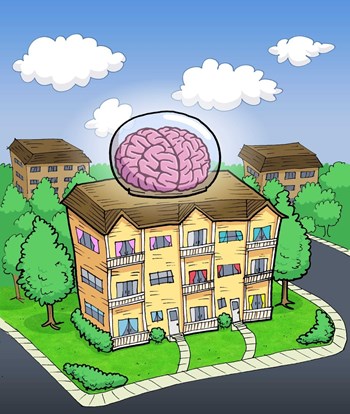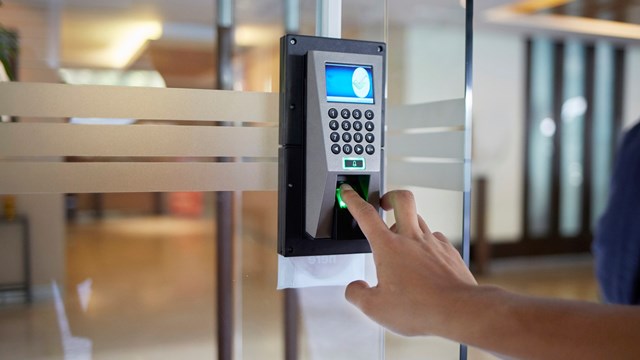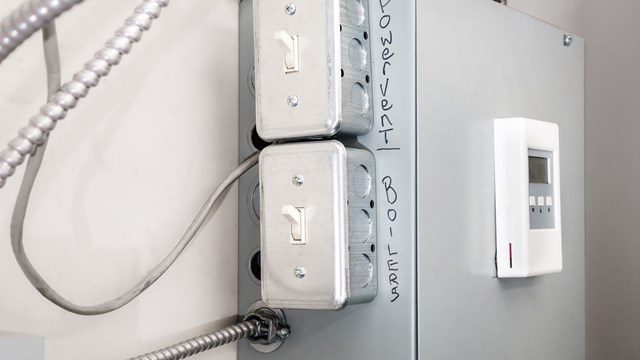
If phones can be “smart,” why not buildings? With the ever-expanding array of consumer technology available today, it should come as no surprise that residential buildings are incorporating more and more cutting-edge technology into their communications, security, and operations systems than ever before, and unifying building operating systems so they can be monitored and run from a central location by a building staff member, or by residents themselves with smartphones and iPads. Many of these innovative systems are being installed from square one in new construction, but also in the form of upgrades and retrofits in older buildings. Let’s take a look at the state of the industry.
When considering smart buildings, the key word is integration. But what does that mean exactly?
Automating Communication
and Technology
“Integration in general is a very broad term, which can be used to describe systems that are (a) just minimally aware of each other—and even systems that are aware of each other only as a result of manual effort, or are (b) fully aware and communicating bi-directionally and in a way that enhances each system’s ability to behave better and smarter. In any building at all, system integration makes the mechanical, electrical and energy operations of a building flow more smoothly and efficiently,” says Jerry Kestenbaum, the president of BuildingLink, a New York-based company that puts condo buildings online and gives association residents from Boston to San Francisco access to all kinds of information.
Generally speaking, commercial buildings are more likely to be state-of-the-art with respect to systems integration, while residential buildings tend to be behind the curve. This is changing, however, as more and more boards are finding wisdom in investing in the new technology. At first blush, it would seem that the needs of both kinds of buildings are the same, but residential buildings have different needs.
“The range of services provided to its occupants tends to be broader,” Kestenbaum says, “and its occupants make use of its services 24/7. Therefore, the more integrated a system is the better it will enable staff to accomplish its mission.”
Security is Key
One example: security. “The security needs of a residential building are much more diverse,” he explains, “in that they include key holding, security monitoring of common areas such as garage and laundry areas, access control monitoring of a range of different types of people with different access control needs even when apartments are unattended (babysitters, dog walkers, contractors doing renovations, food delivery, family members) as well as areas with special access control rules”—for example, no minors in the fitness room.
“Intelligent buildings typically tie together multiple, disparate systems,” says Rawlson King, communications director of the Continental Automated Buildings Association, a 20-year-old international industry association, composed of about 350 corporate members, dedicated to the advancement of intelligent home and intelligent building technologies. “In fact, it can be argued that intelligent buildings transcend integration to achieve interaction so that previously independent systems work collectively to optimize building performance, including monitoring comfort levels, security systems, energy systems and operations.”
Integration and interaction are what drive intelligent buildings. But what does that mean, and how does it work?
Managing Building Operations
“Building automation systems and building energy management systems”—BAS and BEMS, respectively—“are designed to provide centralized oversight and remote control over heating, ventilation and air conditioning (HVAC) systems, lighting and other building systems,” King explains. “In simple terms, a BAS is a programmed, computerized network of electronic devices that are employed for control and monitoring of systems. It primarily aims at optimizing the performance, start-up and maintenance of systems and greatly reduces the interaction of mechanical subsystems in a building. BEMS basically performs the same functions as a BAS but varies more in capability and functionality.”
These systems carry out a host of functions, King says, including optimization of stop-and-start systems, maintenance scheduling, alarm generation, and constant monitoring of the whole integrated system.
“BAS and BEMS vary in capability and functionality, but typically consist of sensors, controllers, actuators and software,” he says. “Depending on whether a human-in-loop factor is involved, decisions are taken manually or by utilizing embedded intelligence such as decision-making algorithms.”
Technology, as the futurist Ray Kurzweil points out in his books, is progressing exponentially. Intelligent buildings are no exception. What began with modest advances is now capable of astonishing feats—now covering everything from HVAC to access control and elevators, and even business systems.
One of the most popular aspects of smart systems in New England homes, says Richard Shook, owner of Automated Homes of New England in Winchester, Massachusetts, still centers on energy use. “The reason we’ve seen people start to use these systems more is that they can see an 11 to 17 percent reduction in their utility bills,” he says. With today’s technology, “people can use their iPhone or Android to call their home to start warming up and cooling down before they arrive home.”
In a condominium setting, he says, each unit can be controlled separately to accommodate the lifestyle of the residents. The systems have also gained favor, he says, with property managers, who can warm up vacant apartments from their offices just before prospective renters arrive for a showing.
“Traditionally, building systems had been characterized by highly proprietary offerings with limited ability to inter-operate,” King notes. “As an example, in the 1950s, control over a commercial building’s lighting systems and heating and air conditioning would have been separate functions, probably maintained by separate personnel. With the advent of computer systems being integrated into buildings in the late 1980s and early 1990s, such building systems could be centrally controlled”—that is, integrated.
Remote Control
Once that was achieved, the technology flourished. “With the advent of open networking and the Internet, now systems can be controlled remotely, and building operations across a whole building portfolio can be centralized in one regional control center,” King says.
Of course, just because something is possible doesn’t mean everyone is doing it; contrary to popular belief, not everyone tweets or is on Facebook. “Some buildings have adopted only the barest of minimums of technology innovation, often when older systems have failed and have been replaced with new equipment, like current smarter boiler controls, elevator controls, or to meet bare-bones security needs—like having one or more video cameras displaying or recording a service alleyway or a laundry room area,” Kestenbaum says.
“Others have begun to adopt somewhat more advanced technology with better access control, smarter HVAC systems using better predictive algorithms for heating and cooling, and adopting comprehensive communications-event-data tracking systems like BuildingLink that use the internet for advanced communications and security event logging and notification.”
Of particular interest to residential buildings, with their multiple entries (front door, laundry, common rooms, roof, etc), is what Kestenbaum calls “key security—meeting the challenge of keeping emergency copies of owners’ (unit) keys in a totally secure environment (so as to prevent employee theft or other unauthorized access) while at the same time providing quick emergency access 24/7.” This is a relatively new option, he explains. “Twenty years ago, there was no system at all for this, and now there are two: Keytrack, and our solution, KeyLink. These are highly sophisticated lockbox biometrically-operated systems, uniquely used by residential high-rise buildings, auto-dealerships, and the U.S. military in Iraq.”
Not every system available is suited to every building, however, and Shook has reservations about some uses of the technology. “Wireless technology still has a lot of problems,” he cautions, referencing a lighting control system in one community that was on the same frequency as a taxi company. A cab sitting in front of the building could turn indoor lights on and off, he says. Shook also prefers traditional hard-wired installations for safety systems like smoke or carbon monoxide detectors, although he has “no problem” with the use of wireless motion detector systems. Each community or building, he says, needs to evaluate the options before adopting the latest technology. “People are slow to adopt some of these new ideas,” he says. “The best time to make these decisions is when a building is being built…. And we’re seeing that more of the mid-range and high-range condos that are going up include these options.”
What About Cost?
The systems do cost money, but they are not prohibitively expensive—especially when considering the energy savings. For example, the BuildingLink integrated operations platform “can be installed and be up and running in a week if needed,” Kestenbaum says, “and typically would cost a 150-unit building around $4K per year.” Associations, then, have to weigh the costs against potential savings.
“In an era of volatile energy prices and increasing concern over climate change, the need for the innovative application of technology has become highly acute,” says King. “Buildings with integrated intelligent building technologies can save thousands and even millions of dollars in energy by delivering heating, cooling and lighting more efficiency. Intelligent buildings are increasingly using solar walls to capture energy from the sun, ventilation systems to recapture and reuse heat, insulation strategies that enable better climate control, high-efficiency lighting systems that enhance illumination with less electricity and automatic systems that control building services based on activity.”
Kestenbaum agrees. “The LEED pioneers indicate that it definitely does save money, and depending on the areas targeted, the payoff can be longer or sooner. As costs come down, the payback period will become shorter and a greater number of types of ‘smart’ integration undertakings will make sense.”
Greg Olear is a freelance writer and a frequent contributor to New England Condominium. Associate Editor Pat Gale also contributed to this article.









Leave a Comment